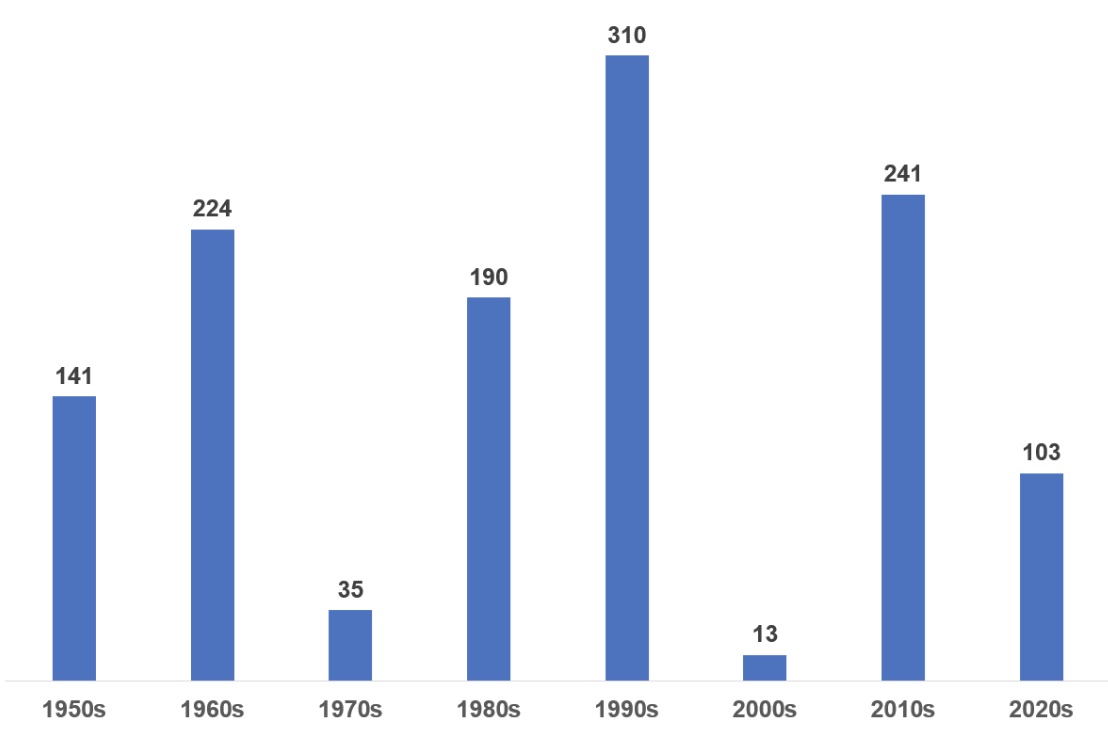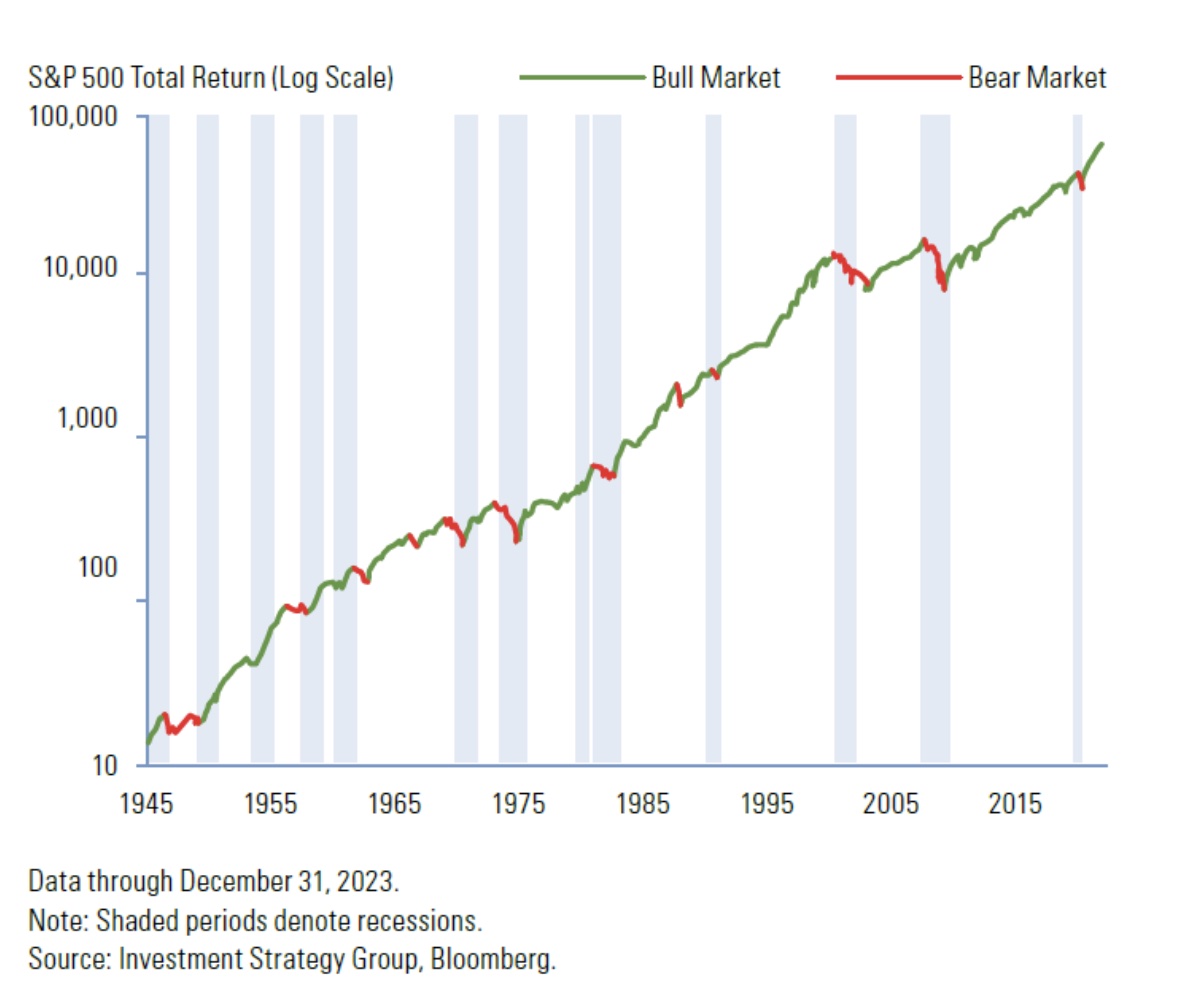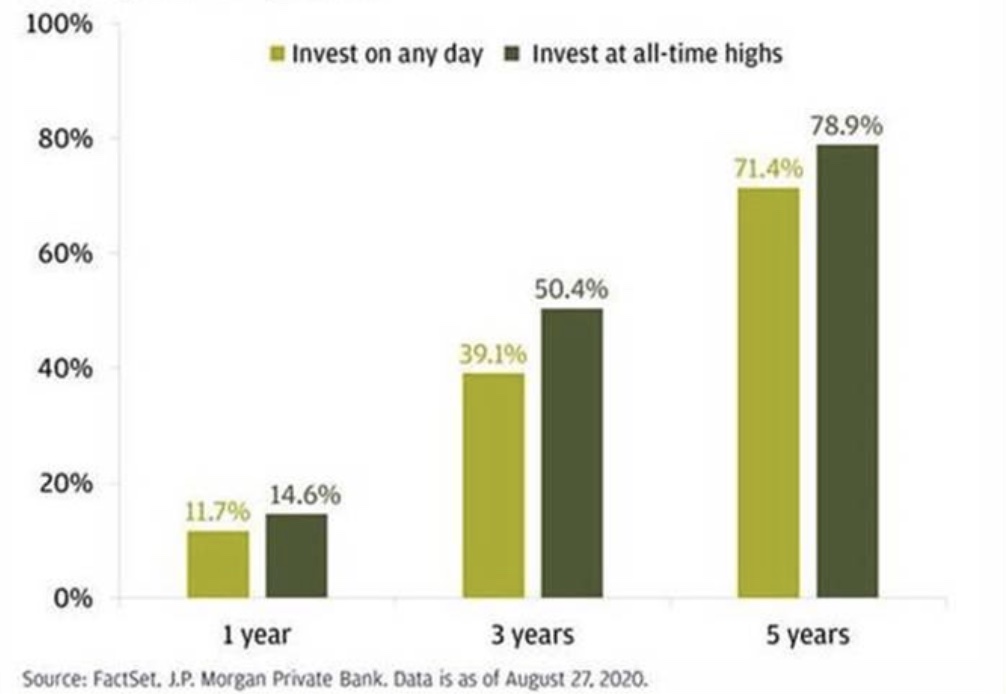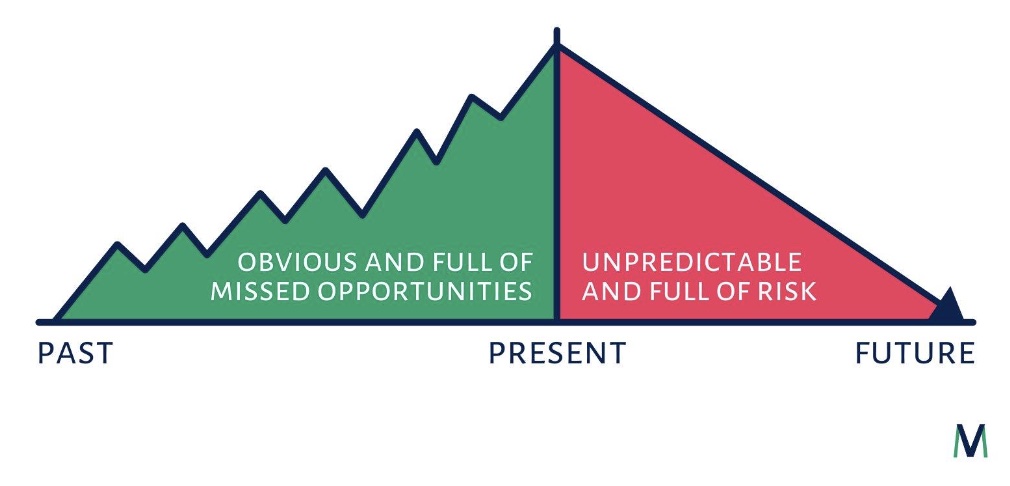That’s a question we frequently hear from investors, and it’s easy to see the rationale behind the concern. After all, we are taught to always buy low and sell high. When markets hit a new all-time high it means that they have been rising recently and we may expect prices to eventually come back down to more affordable levels. Yet much of this inclination to hold out for lower prices is based on the idea that once stocks rise significantly, they’ll begin to revert back to their previous lower levels. But in fact, stocks have historically gone up more often than down − and the markets hit new highs rather frequently.

Take a look at this chart from Ben Carlson at Ritholtz Wealth Management. It illustrates that while market returns are cyclical − with some decades achieving very few new highs − on average we tend to see hundreds of record highs each decade. We are certainly already headed in that direction in the current decade. On average, markets break through to a new high every 19 days, although the highs and lows are often clumped closely together.
S&P 500 New All Time Highs by Decade
 Using Bespoke Data we can look back at the S&P 500’s individual trading days since 1952, and see that the market has traded within 5% of its all-time high over 44% of the time. In other words, for almost half the market’s trading days the index was at (or very close to) its all-time highs. So that is a normal pattern, not an anomaly.
Using Bespoke Data we can look back at the S&P 500’s individual trading days since 1952, and see that the market has traded within 5% of its all-time high over 44% of the time. In other words, for almost half the market’s trading days the index was at (or very close to) its all-time highs. So that is a normal pattern, not an anomaly.
With stocks rising over time, the odds have favored investing sooner rather than later – although that often means investing when the market is at or near new record highs. That makes perfect sense when viewing historical charts like the one below that allow us to clearly see the length of bull markets compared to bear markets.
U.S. Equities are Upward Trending
 But that raises a compelling question. New highs may be common, are investors really well-served when buying into the market at such lofty price points? The answer and the numbers may surprise you. The chart below from Creative Planning CEO Peter Mallouk compared 1, 3 and 5-year return when investing on any given day, versus when markets were at all-time highs.
But that raises a compelling question. New highs may be common, are investors really well-served when buying into the market at such lofty price points? The answer and the numbers may surprise you. The chart below from Creative Planning CEO Peter Mallouk compared 1, 3 and 5-year return when investing on any given day, versus when markets were at all-time highs.
Average Cumulative S&P 500 Total Returns
January 1, 1988 – Present

As the chart illustrates, average investors saw positive returns over 1, 3 and 5-year periods in both scenarios. But the average gain when buying at an all-time high was actually greater, compared to investments made during all other periods. That may seem counterintuitive, but it comes back to the idea that markets tend to rise more often than they fall. Therefore, markets that are growing tend to continue to grow for some time before experiencing a pullback. Mallouk addressed this phenomenon, explaining that “A lot of people think the market goes up and down, and so you know, if it’s an all-time high, well, it’s going down. And that’s not really how the market works. The market generally goes up. It just happens to have down periods.”
You may think, “Okay, sure, that’s fine for the average timeframe, but what about during U.S. election years like 2024? Research from Morningstar reveals that from 1937 to 2022 the S&P 500 recorded average annual returns in election years of 9.9%. That was only slightly below the 12.5% of non-election years, but still clearly positive. They also examined additional factors such as performance during periods of divided government or when the incumbent U. S. president was a Democrat – the same scenario we have today. In those years, the average return was a whopping 15.9%. In addition, since 1952 the S&P 500 has never had a down year during a U.S. presidential reelection year.
All this sounds pretty great for the likelihood of a positive return: stocks tend to go up, that tendency persists even when markets are at all-time highs, and the U.S. is in a presidential election year. But does the data guarantee equity investors a positive return in 2024? Of course it doesn’t. Nobody knows if this year will look like those previous historical examples. But if the past is any guide − and history does tend to repeat itself – neither all-time highs nor politics should dissuade you from continuing to invest toward your long-term goals. The chart below from Money Visuals is helpful for viewing those lower prices of yesterday as obvious missed opportunities − despite knowing that there is always risk due to not knowing exactly what the future holds. Nevertheless, investors who maintain a long-term perspective may want to take advantage of the record-high gains that markets experience over time – and that we are experiencing right now.

Sources: Morningstar Direct 2024, Presidential election years like 2024 as usually winners for US stocks, Matt Sommer, Morningstar, Dec 16, 2023, When Will We See New Highs Again in the Stock Market?, A Wealth of Common Sense, Nov 19, 2022
Indexes are unmanaged baskets of securities that are not available for direct investment by investors. Index performance does not reflect the expenses associated with the management of an actual portfolio. Past performance is not a guarantee of future results. Foreign securities involve additional risks, including foreign currency changes, political risks, foreign taxes, and different methods of accounting and financial reporting. Emerging markets involve additional risks, including, but not limited to, currency fluctuation, political instability, foreign taxes, and different methods of accounting and financial reporting. All investments involve risk, including the loss of principal and cannot be guaranteed against loss by a bank, custodian, or any other financial institution.